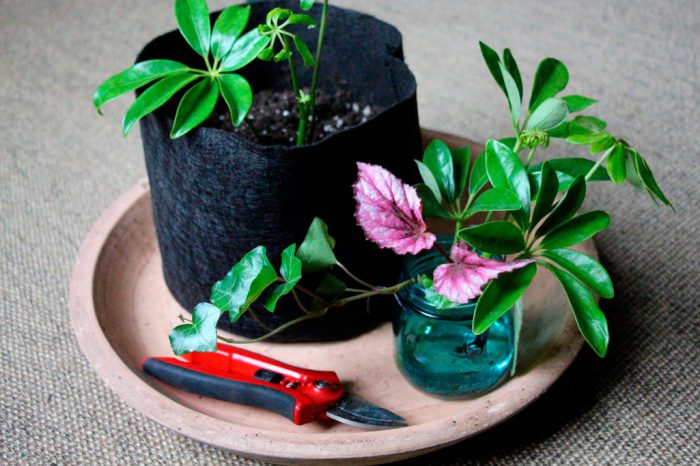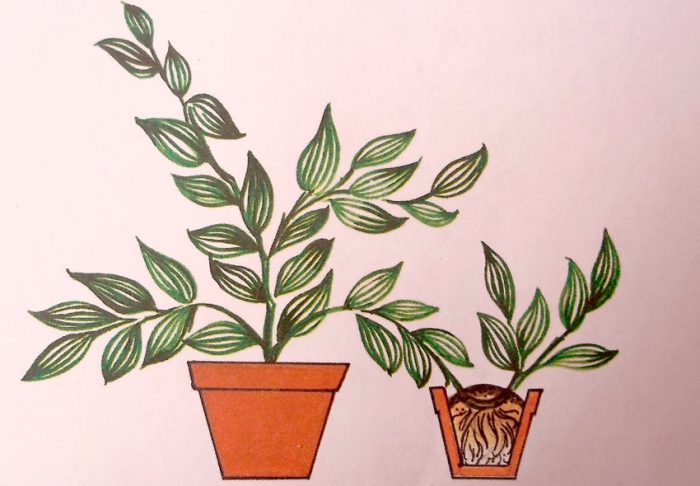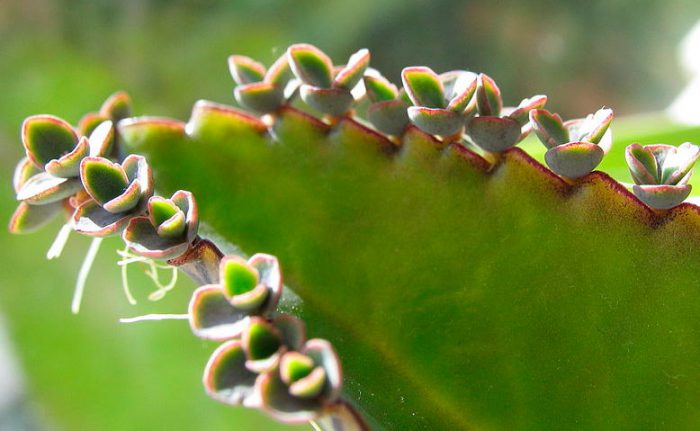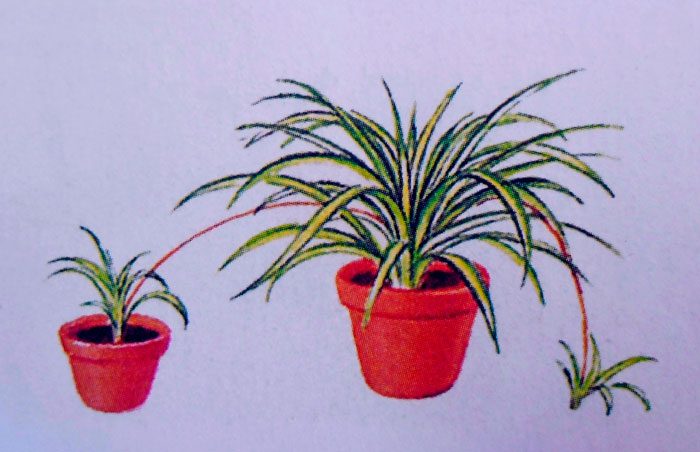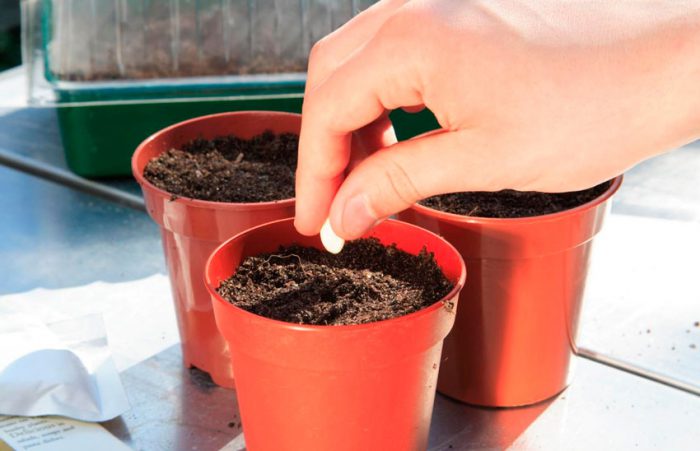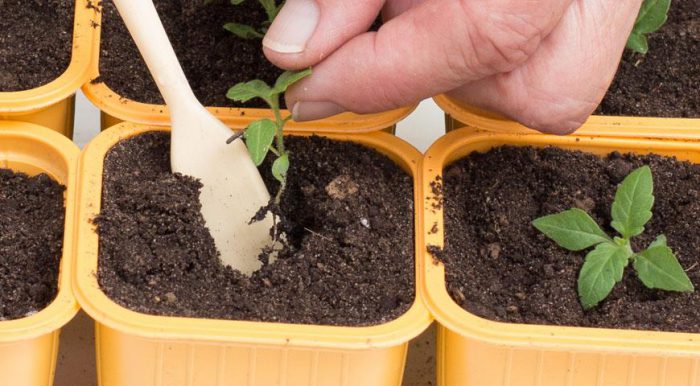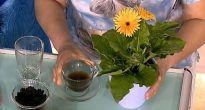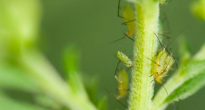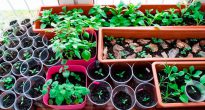Do you want to increase the number of your indoor plants and not spend a penny on it? Or grow a spectacular flower to present as a gift? Or do you want to change the old plant for a young one? Reproduction of indoor plants can help in all of the above cases. Also, floriculture is a great way to entertain your child and instill useful skills in him.
Currently, most of the indoor plants are bought in a specialized store, but sometimes it is much more pleasant to admire a beautiful flower grown by yourself. Many people believe that the propagation of indoor plants is only to tear off a leaf and place it in a glass filled with water for rooting. But this is far from the case. There are many different ways to do this.
Content
Propagation of indoor plants by cuttings
Propagation by cuttings (vegetative method) is the most popular among flower growers. A stalk is a part of a plant that is specially cut off. She has the ability to root and grow. In floriculture, several different types of cuttings are distinguished, namely: stem, leaf, apical, and also middle.
Reproduction by apical cuttings
This method is used for all ampelous plants, as well as for touch-me-not and balsam.
To obtain this kind of cutting, cut off the part of the non-lignified stem, which is at the top. On such a handle, there must be developed leaves in the amount of 2 to 4 pieces. You need to step back a centimeter below the knot and make a cut. It is on this node that the roots appear first. To make rooting faster, it is recommended to treat the cut with growth-stimulating agents (phytohormones).
For rooting, the cuttings are planted in a soil mixture for young plants, and then watered. To keep the humidity high, cover the container with plastic wrap.
Propagation by stem cuttings
You can propagate by stem cuttings ficus, geranium, all succulent plants, and cacti.
This type of stalk can only be cut from a healthy plant, and the cut must be made slightly below the node.Such a stalk should consist of 3 or 4 nodes and leaves should be present on it. Pay attention to the cut, it must be fresh and even. There should be no flowers or buds on the handle. If desired, the leaves on the bottom can be torn off. Rooting is carried out in moist soil, which contains a lot of sand, or a soil mixture for young plants is used for this. After the appearance of the roots (after about 3-4 weeks), the plants are transplanted into an ordinary soil mixture. Most cuttings are rooted simply by dipping them in a glass of water.
If you propagate succulent plants or cacti in this way, then the stalk must be left for several days in the open air for drying before planting for rooting. At the same time, the place of the cut should become tightened, and the edges of it should be bent inward. This will avoid the appearance of stem rot. After planting, the soil is slightly moistened with a sprayer (do not watered).
Cuttings of geranium, as well as succulent plants, are not covered with a film during rooting. All other plants need high humidity at this time, so they need to be covered with plastic.
As a rule, it is recommended to place the cuttings in a well-lit and warm enough place. It should be borne in mind that they must be protected from direct rays of the sun.
As a rule, such cuttings are propagated in spring and summer, when the plant is growing rapidly. But there are plants that are best propagated in this way in the last summer days, for example, geranium, fuchsia.
The middle stalk is considered part of the stem. Cut it off from the middle or bottom of the shoot. As a rule, such cuttings are used for propagation of Tradescantia.
Propagation by leaf cuttings
Leafy cuttings can be used to propagate bushy begonia, gloxinia, uzambara violet (saintpaulia), peperomia.
Reproduction of Saintpaulia is carried out with whole leaf plates with cuttings. A strong, healthy leaf with a handle of a decent length should be cut off from the plant, then it is planted in a special soil mixture. When daughter plants are formed on the leaf plate, they will need to be separated and planted separately.
Succulent plants propagate directly with leaf plates. So, for reproduction streptocarpus, sansevieria and gloxinia part of the leaf is used. It is necessary to plant the leaf in the soil in such a way that only a small part of the leaf rises above the soil surface. In the case when the particles of the leaf plate are too small, they are laid out over the surface and slightly pressed into the substrate.


Watch this video on YouTube
Reproduction by layering
Climbing and ampelous plants with long shoots can be propagated by layering, for example, ivy, chlorophytum and others.
This type of reproduction differs in that a young plant is formed without being separated from the mother plant.
After sprouts appear on rather long shoots, they try to fix them with a wire or hairpin on the surface of a special soil mixture. Rooting is pretty fast. A young plant should be separated when its root system is formed, and it begins to grow by itself.
Reproduction by offspring


The daughter plant that develops from the base of the mother is the offspring. After such plants develop well, they are separated from the mother with a sharp knife or with your hands, while trying to make a cut closer to the main flower. We must try to ensure that the separated offspring has many of its own roots. The separated offspring are planted in an individual pot, and the care they provide is the same as for cuttings.
Small bulbs appear on the mother bulb plant. They must be carefully separated and placed in a separate container. They usually bloom after 1 or 2 years.
Reproduction by children
You can multiply degremona, Kalanchoe, bryophyllum degremona, Kalanchoe tubule.
As a rule, babies with their own roots develop on the tips of the leaf plates of these plants. Separate them with your fingers, while you need to be very careful not to damage the delicate roots. They are planted in containers filled with moist earth mixture. When the flowers grow, they should be planted in separate pots.
Mustache reproduction
You can propagate a mustache episode, braided saxifrage, chlorophytum, tolmia.
At the ends of the shoots of such plants, small daughter plants (whiskers) appear. In the event that they have roots, then the mustache is simply carefully separated and planted in a moist soil mixture. A mustache without roots must be rooted in the same way as when grafting.
Reproduction by division
You can propagate a violet, arrowroot, asparagus, fern, sansevieria, calathea.
When growing, these plants are able to form rosettes (small daughter bushes). In this regard, such a plant can be divided.
It is recommended to propagate by division in spring or in June. The mother plant is removed from the soil, the soil is removed and the daughter part of the plant is carefully cut off or broken off. At the same time, you need to cut where the daughter and mother flower are connected. The cut should have a healthy growing point, as well as developed roots. They are planted in a moist soil mixture. Before a young shoot appears and full rooting occurs, the soil must be constantly moist. The plant also needs to be protected from direct sunlight.
Reproduction by spores
Spores can multiply fern.
This method is rather difficult, but fern lovers can try it.
With proper care, spores appear on the seamy side of adult leaf plates. If desired, such disputes can be bought in the form of mixtures of different or one type. To plant spores, you will need special soil, which includes crushed brick chips and peat mixture.
The substrate is poured into a pot, which should be small, low and wide. Smooth its surface and compact slightly. After that, spores are evenly distributed on the surface of the soil. Cover the pot with glass on top, and then place it in the water poured into the container. To improve the result, instead of tap water, it is recommended to use thawed or rainwater (it is softer). Spores should be placed in a dark and warm place, while making sure that there is always liquid in the container. The first shoots can be seen after about 4–5 weeks. You should remove the cover from the pot after 4–8 weeks, after the seedlings get stronger. Grown plants need a pick, which is made in special trays for germinating seeds. The grown seedlings must be planted in separate pots.
Seed propagation
Several types of cactus can be propagated by seeds, primrose, fuchsia, cyclamen, coleus.
Houseplants are rarely propagated by seeds, because this is a rather complicated method. However, if you wish, you can still try to grow a spectacular plant from a tiny grain. Also, thanks to this reproduction method, it is quite possible to get a new plant shape (for example, with a different color). It is recommended for beginners to choose annual plants for the first sowing, as they are relatively easy to grow.
In March-April, seeds of rapidly germinating plants are sown, and in the last winter weeks, those that germinate for a long time. If there is a thick skin on the seeds, they will need preliminary preparation, so they can be doused with freshly boiled water or placed in a liquid for several days.You can also treat the seeds with aloe juice. This will speed up germination as well as bring flowering closer.
Before sowing, the soil must be warmed up in the oven. For this, a soil mixture consisting of sand and peat, which are taken in equal proportions, is suitable. You can add a small amount of vermiculite. And for sowing, a ready-made soil mixture intended for growing seedlings is suitable.
Fill the pot or tray with soil, level the surface and compact slightly. Spread the seeds over the surface of the substrate (not thickly) and sprinkle them on top, so that they look slightly out. Water with a watering can with a strainer or a sprayer. Cover the container with glass or film. Provide the seedlings with the required temperature regime, as well as the required level of lighting (this information can be found on the package).
Taking care of the planted seeds is easy enough. They only need to arrange systematic ventilation, as well as to ensure regular watering with a sprayer. After the seedlings appear, the shelter is removed, and the container is placed in a well-lit place.
Seedling picking
In order for the plant to have powerful roots, the seedlings must be dived. As a rule, this procedure is carried out 1 to 3 times. There are flowers that do not need to be dived, and some, on the contrary, need to be dived 5 or even more times. The first pick is made after the formation of 1–2 true sheets. With each subsequent transplant, a substrate is used that is more saturated with nutrients.
You can use a peg, pencil or pen to make a hole for a seedling. Stick it to the required depth and then pull it out. After that, you can plant the seedling, while the soil mixture should be wet, and watering after planting must be done using a sprayer. To make the seedlings take root faster, they are sprayed with a solution of phytohormones, and then covered with glass or foil.


Watch this video on YouTube

